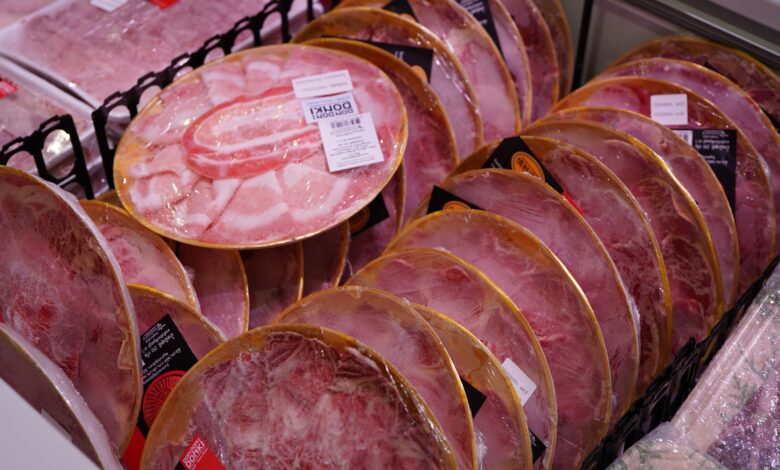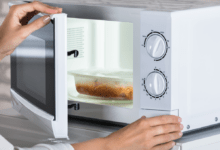
Freezing, thawing, refreezing… There are many precautions for use and they sometimes contradict each other to such an extent that the consumer no longer knows exactly which hygiene rules to observe. The point on what to freeze or not, refreeze or not and on when and how to freeze or thaw.
The principle of freezing and thawing
Food contains a number of bacteria that multiply over time. Freezing slows the proliferation of bacteria, but does not completely stop it.
During defrosting , the bacteria wake up and multiply even more than if the food had not been frozen. This is why refreezing and then defrosting food is very dangerous : it is generally very contaminated, and the risk of poisoning is then increased .
Precautions to take while shopping
If you buy frozen products when shopping, be sure to take them last, just before going to the checkout to break the cold chain as little as possible . Take an insulated bag with you to transport your frozen products during the trip.
You can also opt for the drive circuit, the products will thus spend a minimum of time outside the freezers (no queue at the checkout, shortened loading time, etc.)
In case of strong heat, it is best to take a cooler , even if the journey to your home is not very long.
How to defrost a meal
Defrosting a dish is not done anyhow and requires some precautions .
If frozen prepared meals can be reheated in the oven or in the microwave right out of the freezer, this is not the case for homemade meals that have been frozen. These must, when they come out of the freezer, be placed in the coldest area of the refrigerator to avoid thawing at room temperature , which favors the development of bacteria.
Meats and vegetables can be cooked without defrosting. However, the sudden temperature difference will deplete them of nutrients, as vitamins do not tolerate thermal shocks well.
Tips for successful freezing
Just like defrosting, certain rules must be observed in the event of freezing:
– Place the food in airtight bags or containers and stick a label on it indicating the contents and the date of freezing. In this way, you will no longer wonder when you discover a Tupperware at the bottom of your freezer what it could be and especially when it dates from…
– Wait until the food has completely cooled before freezing it.
– Never refreeze a thawed product, unless it has been annealed for a long time.
– Do not freeze anything that cannot be frozen or does not freeze well, such as raw eggs, red fruits, cheese, etc.
– If you freeze liquids such as pancake batter for example, do not fill to the brim and avoid glass containers: there is a risk of bursting.
What happens during refreezing?
It is not recommended to refreeze food because of the number of bacteria that multiplies in this case.
Since freezing is not immediate , since the dish must first cool down, bacteria still have time to proliferate for a few hours before the food is sufficiently cooled to limit their growth .
Refreeze thawed meat
It is absolutely necessary to avoid refreezing thawed meat because the risk of poisoning is great.
The only way to refreeze meat that has already thawed is to recook it at a high temperature in the oven, in a frying pan, or in a simmer, but not in the microwave.
However, the taste qualities will not be there. Rather than cooking and annealing to be able to freeze, it is therefore better to try to aim just at the level of the quantities.
Some foods can be refrozen more easily than others, such as: vegetables , uncooked fruit pies , cakes and bread .
However, still to avoid the proliferation of bacteria , it is recommended to avoid refreezing food that has been frozen, even if it supports refreezing better.
- bridge
- Allergies (overview)
- Achluophobia : all about the fear of the dark
- At what age can you do bodybuilding?
- Fatigue in the morning: causes and remedies
Precautions to take with ice
Tubs and other tubs of ice cream are often taken out of the freezer and put back when the ice has already started to melt. However, ice cream, being made from milk or cream, or even eggs, should not be defrosted constantly . It is less serious for the sorbet which consists only of water and fruit.
It is therefore best to put the ice cream in ramekins and put it back in the freezer immediately before serving, this way it will not have time to thaw and there will be no health risk.
What to do if the freezer has broken down?
In the event of a breakdown, if there is not much in his freezer, it is not a disaster, but if it is a case of a chest freezer filled to the brim, it is more problem.
First of all, check the defrosting state of the food: is the ice cream melted? Is the core of the food still frozen? Are only the edges defrosted?
If in doubt, best to throw away. If the food has barely had time to thaw, only the meat and fish will be discarded and the other food will be cooked for a long time and at a high temperature during its preparation.
Shelf life of frozen foods
Frozen foods have a limited shelf life. Just because they’re frozen doesn’t mean they can be eaten for years.
Here are the main food families and their shelf life in the freezer:
- Fruits and vegetables: about 1 year
- Chicken in pieces (thighs, fillet) uncooked : 6 months
- Pork, lamb or veal : 6 to 8 months
- Beef, game and poultry : 8 months
- Ground meat : 2 to 3 months
- Filleted fish and shellfish : 3 to 4 months
- Cooked meals (stews, soups) : 3 to 4 months
- Bread and baguette : 1 month
- Cake batter, pancake batter, pastries : 2 months
- Cake : 3 months
- Grated cheese and butter : 3 months










